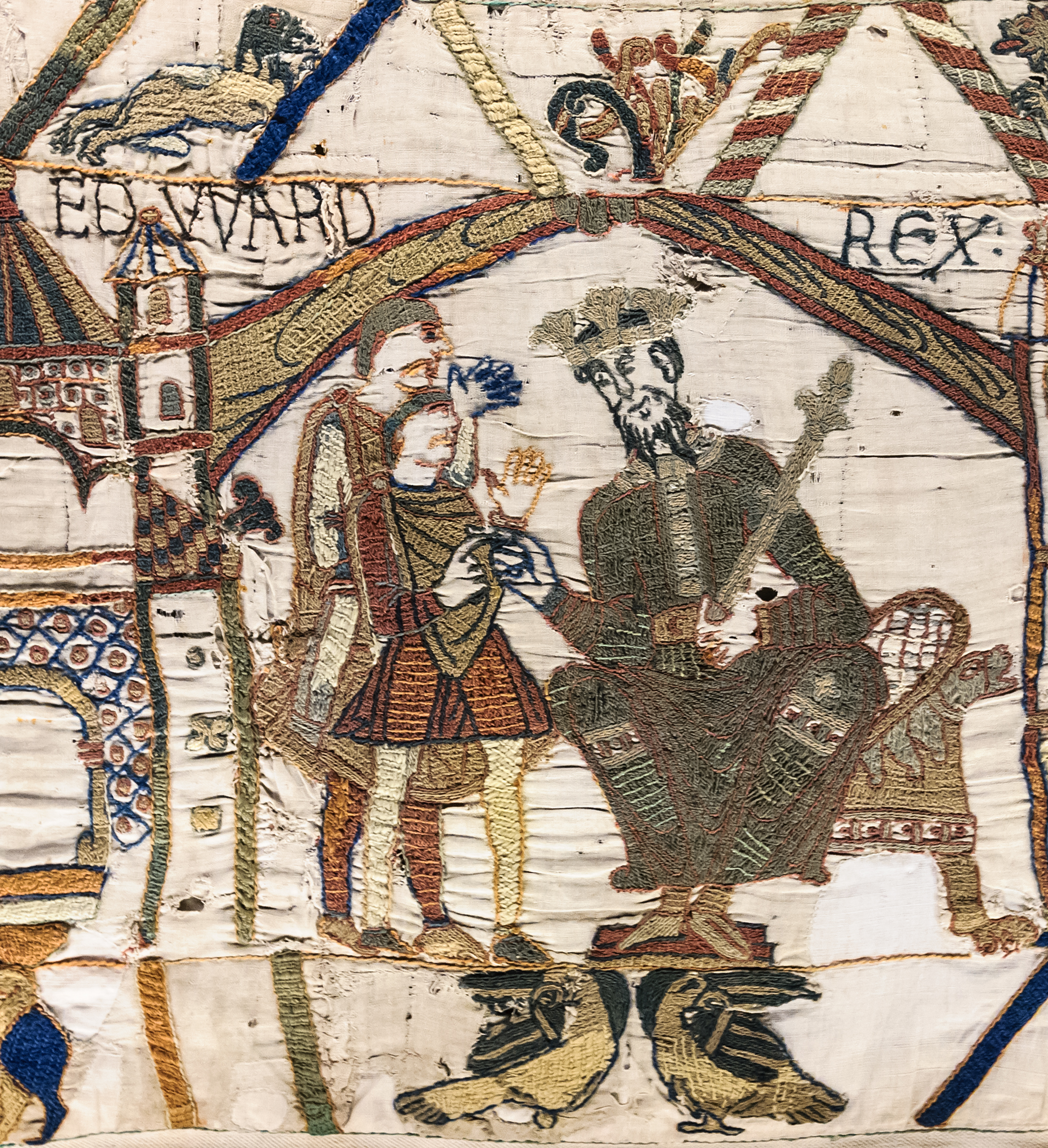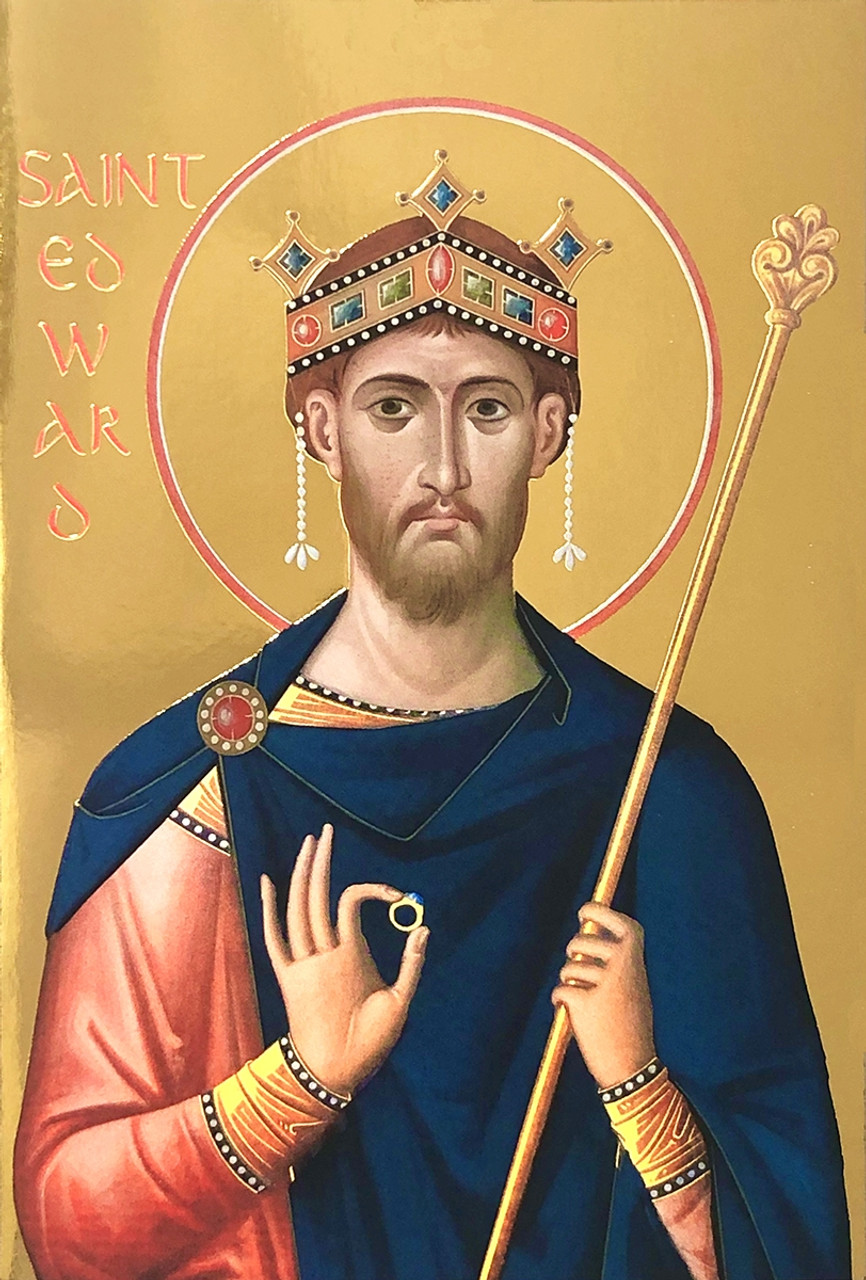Today, were it not a Sunday, would be the Feast of St Edward the Confessor, a patron of England, of the Monarchy and of the Order of the Garter. His feast is kept on the anniversary of the translation of his relics at Westminster in 1163 and 1269 rather than the anniversary of his death.

St Edward the Confessor from the Bayeux Tapestry
Image: Wikipedia

St Edward the Confessor from the Wilton Diptych, circa 1397
This was from probably peak of his cult under King Richard II
Image: Wikipedia

St Edward the Confessor as depicted in an icon commissioned in 2019 for his shrine in Westminster Abbey
Image: Westminster Abbey
Wikipedia, which is very detailed in its lives of Anglo-Saxon royalty, has a lengthy account of his life and cult at Edward the Confessor
The other week I posted in More academic folly about the blinkered nonsense of those academics who re-name courses and journals dealing with Anglo-Saxon history and literature as Early English or Early Medieval - there is, I stress, nothing wrong per se in that specific terminology - because of a “woke” perception, notably in the US, that “Anglo-Saxon” has white supremacist connotations.
Thomas Casemore has written a very good article about this phenomenon, and its wider implications, in The Catholic Herald. It can be read at Another attack on Britain’s Christian heritage: Don't say 'Anglo-Saxon' Catholic
May St Edward the Confessor pray for the King and the nation

Apparently there is a wooden carving of Edward the Confessor near the altar of Exeter Cathedral. In my several visits there so far I have never seen it, but will make a point of doing so when I'm there again. The carving shows King Edward and his wife Edith dragging a ceremoniously reluctant Leofric to the altar, where he was to be enthroned (if that is the correct word) in 1050 as the first bishop of Exeter.
ReplyDeleteI don't know how contempory this carving was, but apparently in life King Edward was quite tall for his time, had a slightly stooped and downcast humble demeanour, and besides his long beard, well-known from the Bayeux Tapestry, he had prominent round cheekbones and notably rosy cheeks.
Regards
John (Ramsden) [ jrq@gmx.com ]